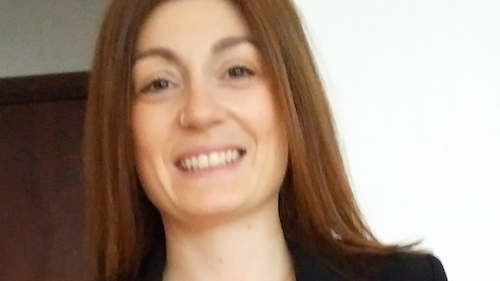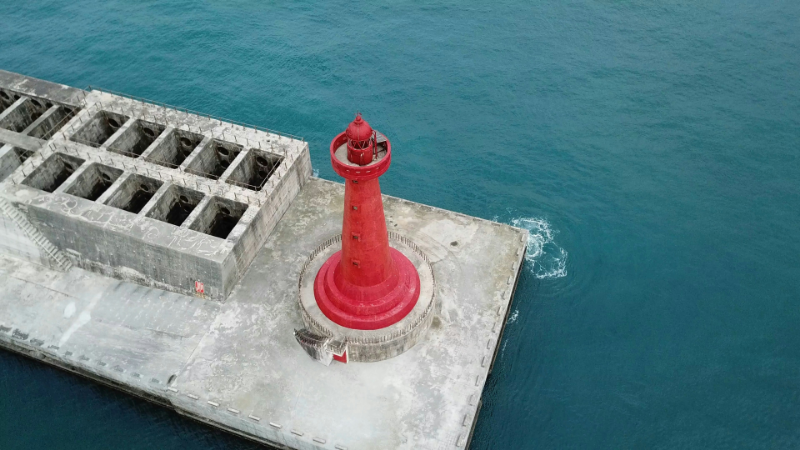Unsere vernetzte Welt verstehen

Vorgeschlagene Richtlinie über das Urheberrecht im digitalen Binnenmarkt: eine verpasste Gelegenheit?
Können Inhalte in Onlinemedien von sogenannten Aggregatoren beeinflusst werden? Werden Plattformen wie Instagram und TripAdvisor bald automatisch Benutzerinhalte filtern? Und ist es eine gute Idee, ein EU-Leistungsschutzrecht für Presseverleger einzuführen? Die Verhandlungen über die lang erwartete EU-Richtlinie zum Urheberrecht im digitalen Binnenmarkt sollen demnächst enden; das letzte Kapitel dieser Saga wird am 12. September im Europäischen Parlament geschrieben. In seiner jetzigen Form soll der Vorschlag die Urheberrechtsvorschriften modernisieren, um die „Wertlücke“ zu schließen. Das vorgeschlagene Konzept wirkt sich jedoch nachteilig auf unser Internetverhalten aus – wie wir kommunizieren, Inhalte gestalten und schaffen. Die Auswirkungen der neuen Richtlinie werden für alle Bereiche der Internetnutzung bedeutend werden: von Memes über die Bereitstellung von Codes und von Content-Remix bis hin zur Verbreitung von Nachrichtenschnipseln. HIIG-Fellow Alexandra Giannopoulou erklärt die Auswirkungen.
In July 2015 the European Parliament published the resolution on the assessment of the implementation of Directive 2001/29/EC of the European Parliament and of the Council of May 22, 2001 on the harmonisation of certain aspects of copyright and related rights in the information society, originally drafted by the Member of the European Parliament (MEP), Julia Reda. The text evoked emotional reactions, indicating that an agreement on the precise content of the necessary revision would not be easy to reach. The European Commission introduced the initial proposal in September 2016. Two years later, following various deliberations and voting processes from the different committees of the European Parliament concerned (LIBE, IMCO, ITRE, CULT, JURI), the text was presented in the plenary session of the European Parliament. On July 5, the plenary vote rejected the trilogue negotiations mandate[1] and opened up the debate in front of the EU Parliament which will vote on further amendments that will create the final text. The vote is scheduled for September 12, 2018. In its current form, the text continues to contain provisions harmful to the way we communicate, create, and build on the Internet.
The main focus of the effort to modernise copyright rules relates to “the value gap”. This term is being used in order to describe the disadvantaged distribution of revenue between copyright holders and the different players involved in Internet content dissemination. The proposals stemming from an effort to tackle this issue have shaped the current image of the proposed text. In this context, the articles provoking the biggest controversy among MEPs, civil society, and citizens, are articles 11 and 13 of the proposal. However, amendments to the exceptions and limitations to copyright could prove beneficial for achieving the desired balance between users and rightsholders and for creating the desired Digital Single Market.
The creation of a new publishers’ right or the “link tax”
Article 11 of the proposed Directive introduces an exclusive neighbouring right for press publishers to manage the digital use of their publications. Under this right, re-use of large-sized snippets will only be allowed after the negotiation of a license with the publishers. This right will last for 20 years from the date of publication of the news piece. The Explanatory Memorandum relates the creation of the right to a „fair sharing of value“ that is necessary to ensure the sustainability of the industry, as
„press publishers are facing difficulties in licensing their publications online and obtaining a fair share of the value they generate„.
In principle, short excerpts from news articles such as the title or a single sentence, do not meet the originality requirement in order to be independently protected by copyright law. Therefore, and in accordance with case law from the Court of Justice of the European Union, the use of such short extracts of news articles does not amount to copyright infringement and a licence is not necessary. Unlike copyright, neighbouring rights do not require originality because their goal is to protect an investment and not the intellectual creation of a creator. In the case of press publishers, the introduction of a neighbouring right will create exclusive rights even in small extracts or news headlines. Reusing these extracts would then require explicit permission from the publishers in question.
The introduction of a neighbouring right is put forward as a remuneration strategy against the declining business market of commercial news and the predominant role of few online platforms in that market. In the current normative framework, press publishers already possess legal tools to ensure remuneration. Namely, protecting an investment according to the European sui generis database right and concluding copyright agreements for news articles create a non-negligible arsenal already at the disposal of the press publishers.
Notwithstanding its purported benefits, the proposed right has already been subject to heavy criticism because it does not seem to fulfil the purpose of its creation nor does it appear to solve current issues from which the commercial publications’ business models suffer. For example, in countries where such a right has already been applied[2], no financial benefit to publishers and journalists has been observed[3]. More than 100 MEPs and the overwhelming majority of the academics in Europe have spoken publicly against Article 11, noting that it will create very broad intellectual property rights in news or other information and that it will block a vital feature of democratic societies which is the free flow of information. What’s more, the subject matter of the proposed right is very broad, adding to the uncertainty around what type of publishers are covered[4]. If the mainstream news publications are the main focus of the article, what about scientific publishers or blogs?
An unpublished study, conducted by the Commission’s Research Center (JRC), contains evidence against the adoption of the new right. According to this paper, the objective behind such a right will not be achieved given that
„the available empirical evidence shows that news aggregators have a positive impact on news publishers‘ advertising revenue. That explains why publishers are eager to distribute their content through aggregators„.
Finally, the consequence of creating an insufficiently demarcated new right is that it becomes impossible to refer to a news article with its title or through a link, creating thus barriers to freedom of information on the Internet.
Platform liability or the “censorship machine”
Article 13 of the proposed Directive addresses the
„use of protected content by information society service providers storing and giving access to large amounts of works and other subject-matter uploaded by their users„. According to the relevant provision, providers are required to take measures “
such as the use of effective content recognition technologies” in an appropriate and proportionate manner in order
“to ensure the functioning of agreements concluded with rightholders and to prevent the availability on their services of content identified by rightholders in cooperation with the service providers„.
The article thus requires that platforms hosting protected content enforce mandatory copyright infringement filters.
The disastrous consequences of applying such filters have been highlighted by the Special Rapporteur on the promotion and protection of the right to freedom of opinion and expression, by the majority of European copyright academics, Internet pioneers, civil society organizations, creators, users, and the media. All the above emphasize the damaging consequences of the application of article 13,
“which can hardly be deemed compatible with the fundamental rights and freedoms guaranteed under Articles 8 (protection of personal data), 11 (freedom of expression) and 16 (freedom to conduct a business) of the Charter of Fundamental Rights of the EU”[5].
Automated content filtering is not the optimal tool to address copyright violations, as there are (to date) no technological filters able to accurately make the distinction between legal reuse of copyrighted content and copyright violation. In most cases, human intervention is required in order to assess the validity of a copyright removal request and to examine whether the publication of the specific content is produced as a result of the application of an exception to copyright. Automatically removing content which is legally produced and published can be therefore qualified as a disproportionate limitation to the users’ and creators’ freedom of expression.
The use of automatic filtering through algorithms creates an unwelcoming environment for sharing content from video remixes and memes, to code or open license projects. The function of content filters is to preemptively prevent uploading or to automatically remove any seemingly unauthorized use of copyrighted material irrespective of the legitimacy of the use. More specifically, when the use in question falls under one of the exceptions and limitations of copyright, which are heterogeneous among Member States’ legislation, there is no need for an express authorization. However, and taking the famous example of memes, if the parody exception cannot be invoked because the relevant provision is not incorporated in national law[6], memes will constitute typically a violation of the copyright of the creator of the disputed image, provided that no express license exists or that the image is not in the public domain already.
Because of the unclear scope of article 13, content providers such as TripAdvisor and Instagram could be found subject to the filtering obligation. In order to ensure compliance, the platforms will have to conclude licenses with all rightsholders on a worldwide scale for a vast number of copyrighted works. The prerogatives of the licensing obligation have yet to be clarified by the Directive. The current licensing landscape shows that it will be extremely difficult to reach such agreements. Additionally, if the platforms do not prevent copyright infringements through automated filtering, they will risk being found as liable. The risk of such liability will ultimately shrink future investment prospects in new online services, especially ones developed by small and medium-sized businesses. Thus, the lack of diversity will ultimately strengthen the concentration of the market on providers already in a significant position. Finally, article 13 does not reflect the principles that led the Court of Justice of the European Union to develop its case law against the introduction of general monitoring measures.
Improving on the exceptions and limitations to copyright
The current version of the proposed Directive has made significant steps towards addressing inefficiencies in the existing exceptions and limitations to copyright introduced by the 2001 Directive. This advancement signals a progress from the Member States’ attitude towards addressing the way that users engage with protected content.
The most notable example is the restructuring of the educational exception. According to the proposed Directive, educators and learners are free to use copyrighted material for educational purposes. Besides the positive amendments to the existing provision, a lot of inefficiencies remain unaddressed. Firstly, the narrow interpretation of educational institutions leaves out of the scope of the exception all non-formal public education as well as online dedicated material thus hampering access options for learners both in the digital sphere and in the physical world. Secondly, the restrictive framing of the permitted uses of digital material to
“the premises of an educational establishment or through a secure electronic network accessible only by the educational establishment’s pupils or students and teaching staff”
leaves ample room for restrictive interpretations that would leave a lot of digital education uses out of the scope of the exception. Thirdly, the relevant article provision specifying that the copyright limitation does not apply when “adequate licences” are available in the market brings an additional layer of complexity to the harmonised enforcement of the educational exception. For example, there is no public interest safeguard limiting the rightsholders from concluding licenses that further restrict the educational exception provisions described in the Directive. In practice, existing collective licensing agreements present big variations in the interpretation of standard terms related to the scope of the right or to its subject matter. Therefore, fragmented licenses hinder the harmonization of the legal framework of exceptions and minimize the impact of the introduction of a uniform educational exception Directive provision.
In a similar context, the noteworthy addition of the text and data mining (TDM) exception constitutes a milestone towards better collaboration between technology and copyright. TDM refers to an ensemble of computer science techniques used to extract knowledge from large digital data sets, by looking for patterns that are usually difficult to notice by individual researchers. According to the Directive, TDM practices will no longer require a separate licence for the reproduction and extraction of copyright-protected works if the acts are performed by researchers in the context of scientific research for public research institutions. Current licensing practices for TDM have been proven to create “a negative association between copyright and innovation”[7]. For example, in the case of scientific publishing, text and data mining is often expressly left out of licensing agreements and “gaining permission to mine content from various publishers can be hugely complex[8]”. A chilling effect then occurs, making the research output based on data mining practices significantly small because of the lack of proper legal tools and permissions[9]. Admittedly, introducing the exception in question is
“essential to unlock the potentiality of European research and unburden researchers from legal encumbrances and uncertainties”[10].
However, there are limitations that risk hampering the efficiency of introducing such an exception to copyright. For example, the European legislative body focuses exclusively on mining practices done by researchers and it provides a narrow definition of research organisations. Consequently, the context of the exception disregards the fact that TDM is an important tool for research but it is also essential in the context of journalism, independent research, or library uses. The endeavour to create a “digital single market” falls short on recognizing the innovation potential that TDM holds for the society in general and not solely in the limited context of research institutions. What’s more, creating a legal framework propitious to TDM requires creating safeguards against both contractual and technical obstacles overriding the implemented exception.
Finally, the hesitance to introduce exceptions in favour of remixing copyright- protected works or publishing pictures of artworks found in public places signifies that European copyright will still rely predominantly on licenses in order to foster a digital remix culture and that the exceptions will serve a more limited and fragmented role. Licensing represents a more traditional approach to copyright and culture and does not fully correspond to the current norms of content production and dissemination. The legal uncertainty and the high transaction costs in securing licensing agreements for modern uses of copyright content creates a chilling effect for users and creators. While more inclusive exceptions such as one regulating user-generated content or the freedom of panorama were proposed by the report drafted by Julia Reda, they were not included in the proposed reform of the Directive because they were viewed “as a polarising example of the extension of users‘ rights online”[11]. This approach does not correspond to the purported goals of the reform, namely to ensure wider access to content, to adapt exceptions to a digital and cross-border environment, and to achieve a well-functioning marketplace for copyright.
[1] Trialogues is a process of tripartite negotiations between the European Parliament, the Council of the European Union, and the European Commission, which are conducted behind closed doors. It is a system set up to fast-track legislation in the European Union. The European Ombudsman has put forward a set of proposals to improve the transparency of the process.
[2] See for example the cases of Germany and Spain.
[3] Calzada J and Gil R (2016), What Do News Aggregators Do? Evidence from Google News in Spain and Germany, Universitat de Barcelona and John Hopkins Carey Business School Working Paper; Peukert A (2016), An EU Related Right for Press Publishers Concerning Digital Uses. A Legal Analysis, Research Paper of the Faculty of Law, Goethe University Frankfurt am Main No. 22/2016.
[4] Bently L et al. (5 December 2016), Response to Article 11 of the Proposal for a Directive on Copyright in the Digital Single Market, entitled ‘Protection of press publications concerning digital uses’ on behalf of 37 professors and leading scholars of Intellectual Property, Information Law and Digital Economy.
[5] Senftleben M, Angelopoulos C, Frosio G, Moscon V, Peguera M and Rognstad Ole A (2018), The Recommendation on Measures to Safeguard Fundamental Rights and the Open Internet in the Framework of the EU Copyright Reform, European Intellectual Property Review 40(3):149-163.
[6] The parody exception is implemented in various Member States such as France and Belgium but does not exist in others such as Greece.
[7] Handke C, Guibault L and Vallbé, J-J (2015), Is Europe Falling Behind in Data Mining? Copyright’s Impact on Data Mining in Academic Research. In: Schmidt B and Dobreva M (eds.) (2015), New Avenues for Electronic Publishing in the Age of Infinite Collections and Citizen Science, IOS Press, pp 120-130.
[8] Geiger C, Frosio G and Bulayenko O (2018), The Exception for Text and Data Mining (TDM) in the Proposed Directive on Copyright in the Digital Single Market – Legal Aspects, In-depth analysis requested by the European Parliament’s Committee on Legal Affairs, p. 13.
[9] Handke C, Guibault L and Vallbé, J-J (2015), Is Europe Falling Behind in Data Mining? Copyright’s Impact on Data Mining in Academic Research, op.cit.
[10] Geiger C, Frosio G and Bulayenko O (2018), The Exception for Text and Data Mining (TDM) in the Proposed Directive on Copyright in the Digital Single Market – Legal Aspects, op.cit., p. 24.
[11] Dulong de Rosnay M and Langlais P-C (2017), Public artworks and the freedom of panorama controversy: a case of Wikimedia influence, Internet Policy Review, 6(1). DOI: 10.14763/2017.1.447.
Foto: flickr.com, CC BY-NC-ND 2.0, Louish Pixel.
Dieser Beitrag spiegelt die Meinung der Autorinnen und Autoren und weder notwendigerweise noch ausschließlich die Meinung des Institutes wider. Für mehr Informationen zu den Inhalten dieser Beiträge und den assoziierten Forschungsprojekten kontaktieren Sie bitte info@hiig.de

Jetzt anmelden und die neuesten Blogartikel einmal im Monat per Newsletter erhalten.
Plattform Governance
Raus aus dem Digitalisierungsstau: Data Governance bringt Städte und Gemeinden auf die digitale Überholspur
Der Data Governance Wegweiser unterstützt Verwaltungen, digitale Lösungen effektiv umzusetzen.
Netzecho: Reaktionen auf die Tagesschau in Einfacher Sprache
Seit 2024 gibt es die Tagesschau in Einfacher Sprache. Wie wird das neue Nachrichtenformat von Nutzer*innen im Internet diskutiert?
Chancen gegen Einsamkeit: Wie Pflegeeinrichtungen das Quartier vernetzen
Was hilft gegen Einsamkeit im Alter? Pflegeeinrichtungen schaffen neue Räume für Gemeinschaft und digitale Teilhabe.




